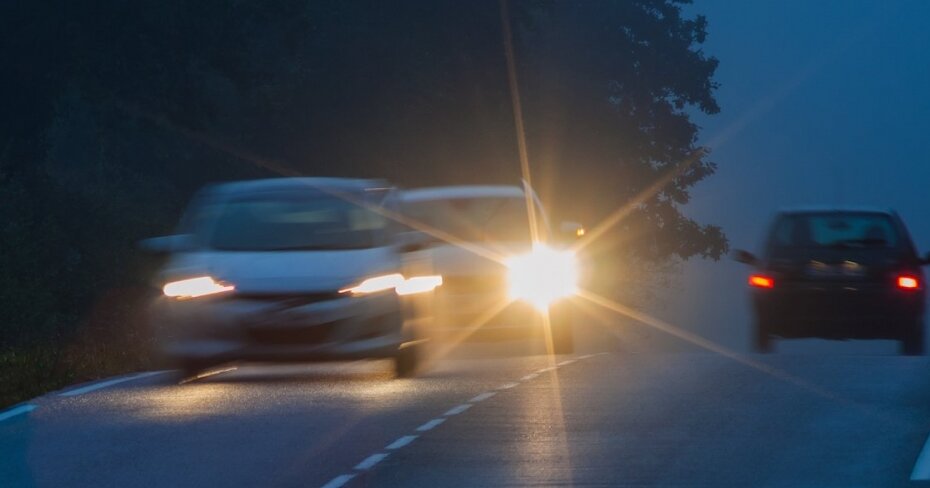What you should do if you’re the victim of a hit and run
By: Jessica Mach on March 4, 2019
On Halloween, we shared the story of a woman who was driving on Ontario’s highway 404 when she was suddenly rear-ended by the van behind her. The collision slammed Cynthia Baker’s car into the vehicle in front of her, but what happened next was also stunning: the van drove away.
Baker was the victim of a hit and run.
“Everybody thinks they’ll never be in that scenario,” said Mac Rostamian, an instructor at Globe Driving Academy in Toronto. But if you ever find yourself in it, he advises, “you don’t take this lightly because it’s a serious matter.”
What should you do if you ever find yourself in a situation like Cynthia’s? The answer might involve more than you think. In addition to making sure that you and your passengers are safe and getting care for any injuries you might have, it’s important to know what recourse is available to you in terms of getting reimbursed for repairs, medical expenses and missed workdays.
The person who hit your car may have fled, but that doesn’t mean that your case is a hopeless one. Here, we’ll outline your next steps.
Safety first
The principle behind inflight safety instructions applies here: take care of yourself before you attend to others.
“Take a deep breath and stay calm first,” advises Rostamian. “Then look after yourself to see if you have any injuries.”
If you are able, your next step should be to check on your passengers, and then the drivers and passengers of any other vehicles that may have been involved in the accident. “We are not enemies,” Rostamian said. “The other person that you hit is still a human being, so you’ve got to look after that person to see if they’re okay.”
If anyone is hurt, immediately call an ambulance.
Assess the damage and report the crash
How badly did the collision impact your car? Sivan Tumarkin, a partner at injury and disability law firm Samfiru Tumarkin, advises against filing an insurance claim unless it’s clearly worth the effort — because sometimes it isn’t.
“If it’s just a fender bender, obviously it’s not really worthwhile for you to do anything about that,” he says. “If you go to your insurance company, you may have a deductible, and by the time you end up paying for a repair, the deductible might not make sense.”
If the total damage to all the vehicles involved in the collision seems to be worth $2,000 or more, however, you’re legally required to report the accident to the police, according to the Financial Services Commission of Ontario. Keep in mind that this rule varies from province to province.
“If your car is driveable — it was not a big accident — you can take it to a collision center to report it,” explains Tumarkin. “But if it is a more severe thing, the police will probably come, and an ambulance may come.”
Cathryn York-Sloan, national resource manager at BrokerLink in Toronto, also emphasizes the importance of reporting the collision. Not doing so, she says, could impact your auto insurance rate. “As long as you report the accident to the local police within 24 hours, it will not impact your premium,” she says.
Getting reimbursed via insurance claims
In an ordinary collision, where the car that’s collided with yours hasn’t fled the scene, the driver who is found responsible for the collision (i.e., at fault) would pay for the repairs and medical expenses of the other driver out of their liability insurance coverage.
In a hit and run scenario, where the at-fault driver has left the scene and you don’t know who they are — much less what type of insurance they have — things work a little bit differently. But, you can still file a claim — you’ll just have to do it with your own insurer.
Whether or not you were at fault in a collision, “if you’re injured, you’re allowed to claim certain benefits from your insurance company. That’s what you pay insurance for,” explains Tumarkin. These benefits, which fall under the umbrella of “accident benefits,” include income replacement (if you can’t work), compensation for medical and care expenses that aren’t covered by the healthcare system, and — in the case of serious injuries — money to hire someone maintain your home or pay for a funeral.
Again, keep in mind that you will have to pay a deductible for any claims you make.
This is also where that police report comes in handy. “The driver will need either a copy of their police report or at least have their police report number when reporting the claim to the insurance company,” York-Sloan explains. “The claims adjuster would then request a copy of the police report from the applicable police department.”
Getting reimbursed via a lawsuit
There’s one category of benefits that your insurance company won’t cover in the event of a hit and run, however: pain and suffering. The compensation sought in a pain and suffering claim is not always for tangible expenses: it’s supposed to cover the cost of treatments for the physical and emotional stress endured by an accident victim, but it also puts a price on the suffering itself. If a driver or passenger was badly burned in a collision, for example, a pain and suffering claim asserts that the victim deserves compensation for going through the experience of being burned, and for any limitations that the burn might introduce to their lifestyle.
In a no fault collision like a hit and run, where no one can identify the driver responsible for the crash, you cannot file a pain and suffering claim against your own insurance company.
But, under Section 265 of the Insurance Act in Ontario, you can file a lawsuit against your insurance company to get these benefits, if you believe you have a good case.
Of course, filing a lawsuit is no small matter: you’re looking at legal fees, and under the Insurance Act, anyone suing their insurer under these circumstances can only win up to $200,000, Tumarkin says.
Any hit and run victim “should consult a lawyer… and that lawyer could advise them on what kind of compensation they could get,” he says. “A lot of people think okay — well if they hit and run, I have no idea who it is, so there’s no way I can get compensation. That’s not necessarily the case.”
Gathering resources
Should you decide to make an insurance claim or file a lawsuit against your insurer, you’re going to need evidence, says Rostamian. So if you are able, you should start gathering what you can as soon as possible — including at the scene of the collision.
“Get as many witnesses as possible,” he advises, referencing pedestrians in particular. “If you cannot recall the vehicle… that hit you, other people may have seen it.
“If [you] yourself have seen it, at the time when your memory’s still fresh, you’ve got to immediately make a note for yourself — what sort of vehicle was it? What color was it? If you can see even a portion of the plate number, that would be helpful for [police] officers.”
If you can access video or photographic footage of the vehicle, all the better, he says. “These days everybody has some sort of device that they can capture pictures. I tell [my students] that right away, take your camera and take a picture of that vehicle... if they can take a picture, especially of the back of the vehicle” — which will help you determine its make and model — “it will be very helpful for officers.”
Another route you can take is to ask businesses and residences near the scene of the collision whether they have footage.
“Say I [get] hit in front of a pizza store,” Rostamian says. “A lot of these business have cameras for their own protection, so the officers can use those footage to their benefit.”


.jpg?itok=88nBkwga)